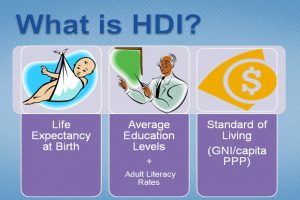Jammu and Kashmir: Human development index
The importance of strengthening the human development (HD) achievements in a country to augment its growth potential is well known in development literature. Several initiatives to enhance the HD level have been introduced in India in recent past.
For arriving at the composite HDI, the sub-components are first arrived at. It is observed from the State-wise Consumption Index (X1) figures that Goa, Kerala, Tamil Nadu, Himachal Pradesh and Maharashtra are among the topper States in terms of urban consumption in 2011-12, while Manipur, Bihar, Uttar Pradesh Arunachal Pradesh and Nagaland are placed at the bottom. On the rural front, Goa, Kerala, and Punjab are at the top, while Uttar Pradesh, Chhattisgarh and Madhya Pradesh are at the other extreme. The stark difference in terms of consumption pattern within States becomes quite clear from the analysis. For instance in 2011-12, while Maharashtra ranks 5 th in terms of urban consumption, it is ranked 17th in terms of rural consumption scores. Conversely in 2009-10, while Jammu and Kashmir ranks 5 th in terms of rural consumption; it holds the 15th position in terms of urban consumption scores. Also, a transformation in the relative position of the States during the study period is noted. For instance, while Kerala’s ranking has consistently improved over 1983-2012, the same for Haryana has deteriorated.
On the education front (X2), Himachal Pradesh, Mizoram, Meghalaya and Nagaland are among the toppers in the terms of achievements in urban areas, while Jammu and Kashmir, UP, Bihar and Rajasthan are at the other end of the spectrum. On the rural front, Kerala, Tripura and Himachal Pradesh remain at the top, while Bihar, Andhra Pradesh and Arunachal Pradesh are at the other extreme. The rural-urban disparity for a number of States turns out to be major concern. For example, in 2011-12, Arunachal Pradesh is ranked 5 th in terms of urban educational achievements, but holds the 26 th position in rural scale.
Sharp intra-state divergence in terms of health Index (X3) is also noted. For instance in 2011- 12, while Jharkhand ranks 24 th in terms of urban health achievements, it is ranked 13th in terms of rural health scores. On the whole, in 2011-12, Jammu & Kashmir, Himachal Pradesh, Kerala, and Punjab are among the toppers, while Uttarakhand, UP, Orissa and Bihar are located at the bottom in the urban scale. On the rural front, Kerala, Jammu & Kashmir, Himachal Pradesh and Punjab and Haryana are at the top, while Assam, Meghalaya, Mizoram and Arunachal Pradesh are at the other extreme.
Jammu –kashmir’s rank and comparision to other states
Jammu Kashmir is ranked 7th among major 17 states with a score of 0.64, Kerala being 1st (0.71) and Bihar (0.53) last. JK has retained its 7th rank in 2015 index compared to 2007-2008 HDI data. With this score JK would be classified as medium HDI economy. However there is a lot of room to improve on all the sub-indices of the state. JK ranks 12th on the income sub-index while on joint health and education sub-index it lags only to Kerala. From these inter-state variations an important inference can be drawn that is the relation between per-capita income and other social indicators is not necessarily one-to-one. Hence again the growth versus development debate is as engaging as it ever has been.
The national average HDI for India in 2008 was 0.467. By 2010, its average HDI had risen to 0.519.UNDP, the sponsor of Human Development Index methodology since 1990, reported India’s HDI to be 0.554 for 2012, an 18% increase over its 2008 HDI. United Nations Declared India’s HDI is 0.586 in 2014, an 5.77% increase over 2012. As for the year 2016, HDI for India stood at 0.624. There are many ways to calculate HDI, and its calculation is sensitive to base data and assumptions. Using another approach, UNDP India and Government of India calculated the HDI nationwide average to be 0.605 in 2006. This data was published by the Indian Government.Note that the 2007-2008 HDI values in the table below is not based on income as is the UNDP standard practice for global comparisons, but on estimated consumption expenditure – an assumption which underestimates the HDI than actual. Further, data was unavailable for the following states and union territories: Chandigarh, Lakshadweep, Andaman and Nicobar Islands, Daman and Diu, Puducherry, and Dadra and Nagar Haveli.
JKPSC Notes brings Prelims and Mains programs for JKPSC Prelims and JKPSC Mains Exam preparation. Various Programs initiated by JKPSC Notes are as follows:-
- JKPSC Mains Tests and Notes Program
- JKPSC Prelims Exam 2018- Test Series and Notes Program
- JKPSC Prelims and Mains Tests Series and Notes Program
- JKPSC Detailed Complete Prelims Notes
